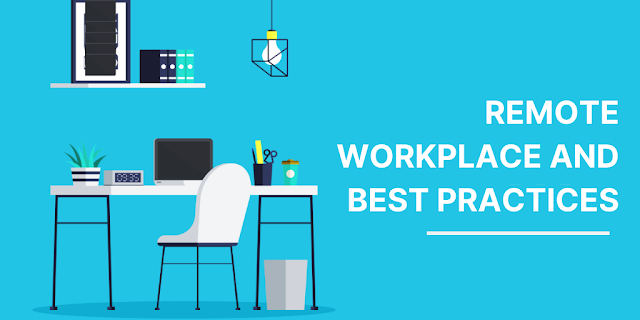connecting to the VPS of the system from anywhere, employees have the flexibility to work from anywhere, anytime. Either you have regular work from the home system or if your employees are adapting to work because of bad weather or illness or any pandemic situation like COVID-19. It's important to let your employees remain productive.
Shifting from workspace to remote working employees plays a vital role in minimizing the consequences of any novel situation. Though it's a little adjustment for the ones who have not worked in this telecommuting environment before and it could also be somewhat stressful. Thus, proper communication and planning play a key role in managing remote employees.
Let's know check, what are the benefits of adapting work from home culture -
The WFH system provides tons of benefits for both employers as well as their employees. As per the recent statistics, remote work helps to increase productivity, which helps organizations to grow high. Employees become more efficient towards their work as they get less distracted and less stressed as they don't have to deal with commuting, etc. Similarly, it helps to reduce operating costs to run their business smoothly and also reduces the employer's compensation claims.
What Are The Best Practices When Creating Work From Home Programs?
Organizations that are planning to move their on-site to the remote workplace should create some guidelines, considering all the key things to ensure what all they need. So, here are some of the key elements of work from home policy that should get shared with all the employees.
Adopting advanced technology
 |
| Remote Workplace |
The latest version of computers or laptops, high-speed internet connection, quick access to required tools, phone conferencing software, productivity monitoring software, etc.
Using a secure connection
Remote employees should have a proper internet connection and work with trusted VPN. The VPN system is a buffer between your operating device and wifi-connection. It saves the encrypted data from intercepting or tampering.
Implement communication apps
 |
| Communication Apps |
Keep in contact with workers who operate from home via Skype, Zoom and other chatting options. Remote workers can often feel disconnected from the rest of the team so it is important to stay in touch with them through telephone, email, texting, or video conference.
Set Clear Goals
Build a strategy function with your particular program's goals. The policy should include guidelines for the daily work schedule of an employee, overtime policies for the company, summary of a dedicated workplace, guidelines for reporting personal injury and damage to company equipment, and security of confidential business information.
Test The implemented programs
 |
| Test Your Programs |
If you are implementing a work from home policy, take the time to evaluate its effectiveness thoroughly. Adjust the program based on your findings and bugs.
Trust Your Employees
One of the most critical aspects of a home-policy function that is not included in the document itself. Employers need to support and trust your workers while they are not working on-site to get their jobs completed.
After implementing the work from home policies, there might occur some risks. So, let's know How to prevent risks and take safety tips?
A key best practice for ensuring protection and minimizing claims for workers' compensation is to develop guidelines for working from home that will help reduce the potential risks. The policy should include guidelines on risk management that are related to research from the above-mentioned home security criteria, including:
Create a workplace ?
 |
| Create Workplace |
Even when the employees are working remotely, Employees should set up a dedicated workspace where they have limited distractions to concentrate on their job.
Check the work area
The workplace should be checked to ensure that it is free from any risks, including problems with fire and ventilation, slipping and dropping risks and other regular risk factors.
Learn the workplace injuries
Teach all your employees how you can prevent workplace problems that may arise both in the on-site and remote workplace.
Conclusion
These are a few of the best workplace practices along with the risk prevention tips that will help employers. Apart from that, the best remote workplace monitoring software can also prove advantageous to manage to work calmly during this pandemic situation.







